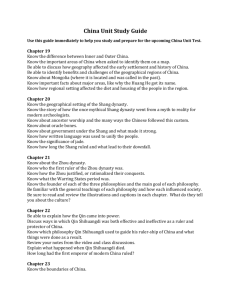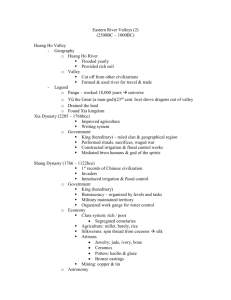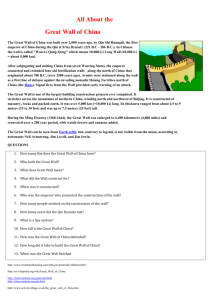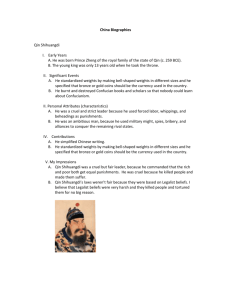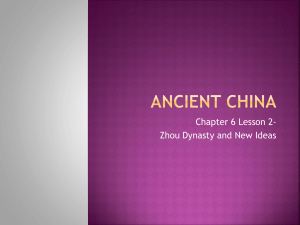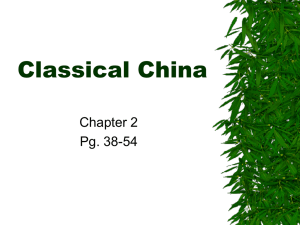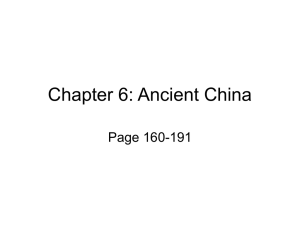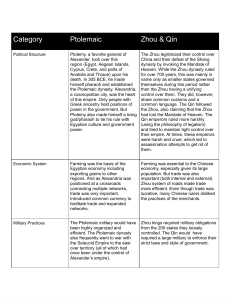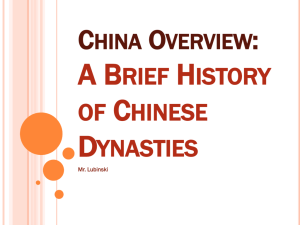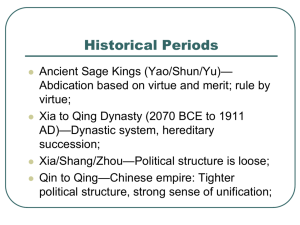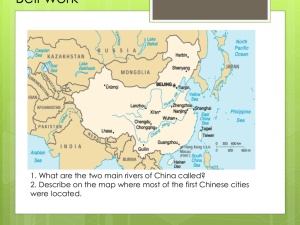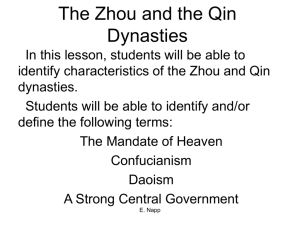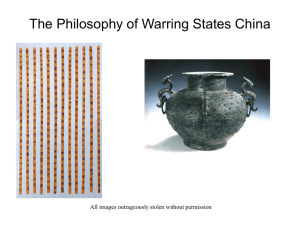Zhou and Qin Classical China PERSIAN Chart Key
advertisement
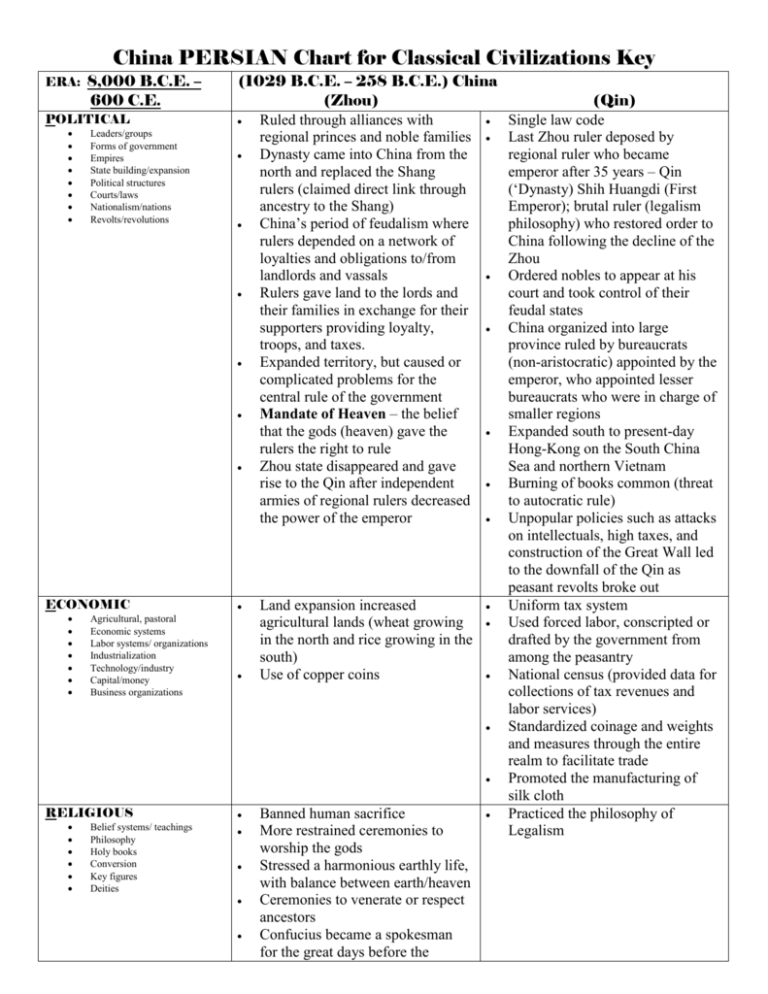
China PERSIAN Chart for Classical Civilizations Key ERA: 8,000 B.C.E. – 600 C.E. POLITICAL Leaders/groups Forms of government Empires State building/expansion Political structures Courts/laws Nationalism/nations Revolts/revolutions ECONOMIC Agricultural, pastoral Economic systems Labor systems/ organizations Industrialization Technology/industry Capital/money Business organizations (1029 B.C.E. – 258 B.C.E.) China (Zhou) Ruled through alliances with regional princes and noble families Dynasty came into China from the north and replaced the Shang rulers (claimed direct link through ancestry to the Shang) China’s period of feudalism where rulers depended on a network of loyalties and obligations to/from landlords and vassals Rulers gave land to the lords and their families in exchange for their supporters providing loyalty, troops, and taxes. Expanded territory, but caused or complicated problems for the central rule of the government Mandate of Heaven – the belief that the gods (heaven) gave the rulers the right to rule Zhou state disappeared and gave rise to the Qin after independent armies of regional rulers decreased the power of the emperor Land expansion increased agricultural lands (wheat growing in the north and rice growing in the south) Use of copper coins RELIGIOUS Belief systems/ teachings Philosophy Holy books Conversion Key figures Deities Banned human sacrifice More restrained ceremonies to worship the gods Stressed a harmonious earthly life, with balance between earth/heaven Ceremonies to venerate or respect ancestors Confucius became a spokesman for the great days before the (Qin) Single law code Last Zhou ruler deposed by regional ruler who became emperor after 35 years – Qin (‘Dynasty) Shih Huangdi (First Emperor); brutal ruler (legalism philosophy) who restored order to China following the decline of the Zhou Ordered nobles to appear at his court and took control of their feudal states China organized into large province ruled by bureaucrats (non-aristocratic) appointed by the emperor, who appointed lesser bureaucrats who were in charge of smaller regions Expanded south to present-day Hong-Kong on the South China Sea and northern Vietnam Burning of books common (threat to autocratic rule) Unpopular policies such as attacks on intellectuals, high taxes, and construction of the Great Wall led to the downfall of the Qin as peasant revolts broke out Uniform tax system Used forced labor, conscripted or drafted by the government from among the peasantry National census (provided data for collections of tax revenues and labor services) Standardized coinage and weights and measures through the entire realm to facilitate trade Promoted the manufacturing of silk cloth Practiced the philosophy of Legalism China PERSIAN Chart for Classical Civilizations Key decline of the Zhou (political virtue and good government); mostly appealed to the upper classes; peasants maintained polytheistic beliefs, focusing on the spirits of nature SOCIAL Family/ kinship Gender roles/relations Social and economic classes Racial/ ethnic factors Entertainment Lifestyles “Haves” & “have nots” INTERACTIONS ARTS War/conflict Diplomacy/treaties Alliances Exchanges between individuals, groups, & empires/nations Trade/commerce Globalization Art / Music Writing/ Literature Philosophy Math / Science Education Architecture Technology/ Innovations Transportation ENVIRONMENTAL Location Physical Human/environment Migration/movement Region Demography Neighborhood Settlement patterns Disease Urbanization/ cities (2 major) Use of chopsticks – encouraged politeness Gap between the nobles (2% of the population) and the peasants “mean” = lowest possible status; people who performed rough transport and other unskilled jobs Inherited social status (but could move up with merit) Standard spoken language (Mandarin Chinese) promoted linguistic unity Built the Great Wall of China to protect against invaders A set of Five Classics – written in early part of Zhou dynasty and edited during the time of Confucius; basics of civil service exams in the Han period, including histories, speeches, etiquette, ceremonies (over 300 poems about love, joy, politics, and family life appear in the Classics of Songs) Calendar with 365. Days (practical work in science was encouraged) Great Wall of China Road planning Uniform writing system (Chinese script) = single basic language Sponsored public works such as new irrigation projects and canal systems for agriculture

